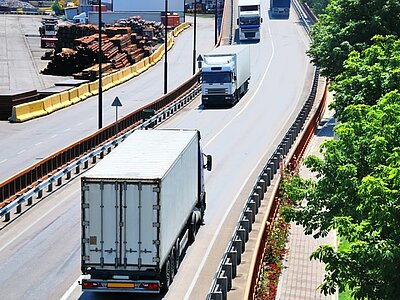General

Goods introduced into the customs territory of the Community are subject to customs supervision from the time of their entry and must be assigned to a customs-approved treatment or use (e.g. placed under a customs procedure, entered into a free zone or free warehouse, re-exported, destroyed or abandoned to the Exchequer). If the goods are not entered for a customs procedure already at the time of their introduction into the Community, they must be placed under a transit procedure and carried to the customs office which initiates a relevant customs procedure. A transit procedure is a customs procedure which allows the movement of goods from one point within the customs territory of the Community or Member State to another without such goods being subject to import duties. A detailed description of a transit procedure is given in the Instructions on the implementation of a Community/common transit procedure in the NCTS System No 3/2013, and in the Transit Manual.
There are two different types of transit procedures with different legal basis:
The Community transit procedure is based on the Community Customs Code and is applicable to the movement of goods in the customs territory of the Community. The code T1 is applicable to the external Community transit procedure, the code T2 to the internal Community transit procedure. The Community transit procedure is used also for the movement of Community goods between different points in the customs territory of the Community and parts of this territory where the provisions of the VAT Directive do not apply (the transit document T2F is used), for the transit of goods between the Community and Andorra or between the Community and San Marino, both of which signed agreements on customs union with the European Economic Community (OJ EU L 84, 28. 3. 2002).
The common transit procedure has its legal basis in the Convention on a common transit procedure and Convention on the simplification of formalities in trade in goods. It can also be used on the territories of the contracting parties to the Convention on a common transit procedure not forming part of the customs territory of the Community. T1 is used for the movement of non-Community goods, T2 for the movement of Community goods. The contracting parties to the convention are besides the EU also Norway, Switzerland, Iceland, Liechtenstein and Turkey.
The external Community transit procedure is used for the movement of non-Community goods within the customs territory of the Community without such goods being subject to import duties (also VAT and excise duties) and to commercial policy measures (T1 transit procedure). The Customs Code provides for the use of the external Community transit procedure of Community goods in certain cases and under certain conditions in order to prevent products covered by such a procedure and benefiting from export measures from evading or unjustifiably benefiting from such measures.
The Community/common transit procedure is carried out by means of data-processing technique and on the basis of a customs declaration which must be submitted in an electronic form in the NCTS system (New Computerised Transit System). The countries involved in the Community/common transit procedure are the EU Member States, Andorra, San Marino and all other contracting parties to the Convention on a common transit procedure, i.e. Norway, Switzerland, Iceland, Liechtenstein and Turkey.
Legislation
Agreements, convetions & protocols
EU legislation
Regulations
- Regulation (EU) No 952/2013 of the European Parliament and of the Council of 9 October 2013 laying down the Union Customs Code
- Commission Delegated Regulation (EU) 2015/2446 of 28 July 2015 supplementing Regulation (EU) No 952/2013 of the European Parliament and of the Council as regards detailed rules concerning certain provisions of the Union Customs Code
- Commission Implementing Regulation (EU) 2015/2447 of 24 November 2015 laying down detailed rules for implementing certain provisions of Regulation (EU) No 952/2013 of the European Parliament and of the Council laying down the Union Customs Code
- Commission Delegated Regulation (EU) 2016/341 establishing transitional rules for certain provisions of Regulation (EU) No 952/2013 of the European Parliament and of the Council, laying down the Union Customs Code where the relevant electronic systems are not yet operational
 REPUBLIC OF SLOVENIA
REPUBLIC OF SLOVENIA